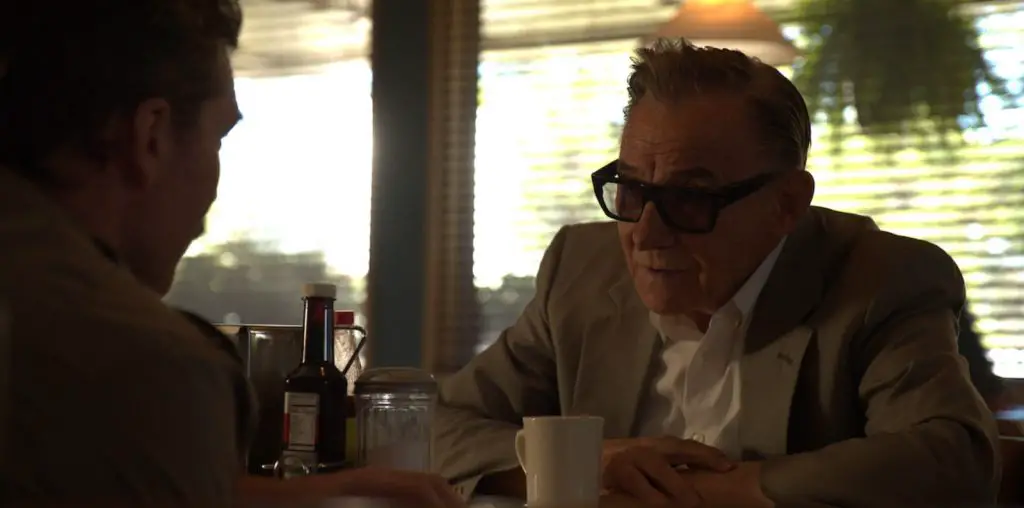
BOOTLEG FILES 567: “Dressed to Kill” (1946 Sherlock Holmes mystery starring Basil Rathbone and Nigel Bruce).
LAST SEEN: Now on YouTube, Internet Archive and other sites.
AMERICAN HOME VIDEO: On many public domain labels.
REASON FOR BOOTLEG STATUS: A lapsed copyright doomed this to the public domain.
CHANCES OF SEEING A COMMERCIAL DVD RELEASE: A handsomely restored version is on DVD.
One of the most beloved cinematic series of all time was the 14-film franchise based on Sir Arthur Conan Doyle’s detective mysteries, featuring Basil Rathbone as Sherlock Holmes and Nigel Watson as Dr. Watson. However, there was one person who was not enchanted with the series: Basil Rathbone, who came to loathe the role that brought him his greatest fame.
The Holmes and Watson films began at 20th Century Fox in 1939 with an opulent adaptation of Conan Doyle’s “The Hound of the Baskervilles.” The casting of Rathbone was an unusual choice, as the South African-born actor was recognized as one of Hollywood’s most efficient villains – he received Oscar nominations for his performances as Tybalt in “Romeo and Juliet” (1936) and Louis XI in “If I Were King” (1938), as well as a degree of immortality as Sir Guy of Gisbourne in “The Adventures of Robin Hood” (1938). Bringing in Nigel Bruce as Dr. Watson was also a gamble, as the British character actor’s film career had mostly been relegated to minor parts in forgettable films.
“The Hound of the Baskervilles” was a major box office success, and Rathbone and Bruce were rushed into a follow-up called “The Adventures of Sherlock Holmes,” which was even more entertaining than its predecessor. The actors were also cast for a radio series called “The New Adventures of Sherlock Holmes,” which began in 1939 and ran for eight years. But 20th Century Fox ran into a dispute with the Conan Doyle estate and the studio opted not to pursue the franchise. In 1942, the scrappy Universal Pictures secured the rights to the Sherlock Holmes stories and contracted Rathbone and Bruce to repeat their roles. But Universal lacked the financial muscle of 20th Century Fox, and its films were B-grade efforts; the studio even brought the characters from the Victorian period to the present day as a means of saving money on costumes and production design.
By 1946, Rathbone and Bruce starred in 11 Universal-produced features based on the Conan Doyle characters, and they also made a gag appearance in character for the zany Olsen and Johnson comedy “Crazy House.” When production began on a new film, tentatively titled “Prelude to Murder” and later renamed as “Dressed to Kill,” Rathbone was eager to call it quits. He had lost a golden chance to star as Lord Henry Wotton in the MGM prestige film “The Picture of Dorian Gray” (George Sanders snagged that role) and other A-list roles seemed out of reach to him because he was so deeply associates with Holmes.
In watching “Dressed to Kill,” the viewer can see that Rathbone’s heart was not in his work. His performance is strictly adequate, lacking the gusto and (dare we say it?) juicy hammy energy that made the series so much fun. But even with Rathbone at half-speed, the film is a pleasant distraction that takes a thoroughly inane plot and makes it compelling.
“Dressed to Kill” opens at Britain’s notorious Dartmoor prison, where efforts get convict John Davidson to disclose the location of his stolen Bank of England printing plates for five-pound notes have been fruitless. While in prison, Davidson becomes involved in a workshop where he creates music boxes, and three of his creations are sent to a London auction house for sale. The boxes are sold to three different people at lower-than-expected prices. Hours after the sales are made, a man identifying himself Colonel Cavanaugh arrives at the auction house after the auction and begins to make inquiries about the music boxes. Thanks a generous bribe to the auctioneer, he finds out who purchased the three music boxes.
The first person located is Julian Emery, a schoolmate of Dr. Watson. Emery shows up at 221B Baker Street, where Dr. Watson is delighted to see his old friend “Stinky.” During this visit, Emery details how he was assaulted in his home by a burglar seeking an insignificant music box he purchased – it is not the one he just purchased at auction, but a similar model he kept on display. The following day, Holmes and Watson learn that Emery had been murdered and the music box he won at auction is gone. Holmes soon learns the origins of the music boxes and deduces that the three boxes must contain a unified secret message that Davidson is trying to relay to his confederates. The race is on between Holmes and his unknown enemies to locate the remaining music boxes and solve their puzzle.
What is the message that Emery is trying to get out of prison? And how does Holmes save the day? I know that there are plenty of websites that have the full plot of “Dressed to Kill” spelled out, but for this review I would rather step back and urge the reader to see the film without knowing in advance how it plays out. Even giving away the slightest whiff of a plot twist will ruin the fun that “Dressed to Kill” has to offer.
What can be said, however, is that the film puts a great emphasis on style, which certainly helps when the screenplay’s substance produces more than a few WTF-worthy moments. This film, along with all but one of the Universal entries in the series, was briskly directed by Roy William Neill, a British-born filmmaker who did a splendid job in hiding the production’s low budget via intelligent camera placement and noir-style lighting. (Neill died of a heart attack a few months after finishing work on this film.) And perhaps in view of Rathbone’s indifference to the work, “Dressed to Kill” has a stronger than normal performance by Nigel Bruce as Dr. Watson – the usual brand of bumbling that he brought to his roles was replaced by a more mature and warm personality, with the character being identified as a prolific writer and showing compassion to a traumatized child by trying to gain her confidence with his amusing imitation of a squawking duck.
Critical reaction to “Dressed to Kill” was mixed, with many reviewers expressing dismay about the title, which seemed to have nothing to do with the plot. Universal further confused matters by putting a heavy emphasis on leading lady Patricia Morison in the film’s poster art, suggesting that she was the one who was dressed to kill. In Great Britain, the film was presented as “Sherlock Holmes and the Secret Code” in order to avoid any suggestion of an irrelevant title.
The film’s box office return was respectable, and Universal was planning four new Holmes and Watson films when Rathbone abruptly withdrew from the franchise. He also quit the radio show “The New Adventures of Sherlock Holmes,” with Tom Conway briefly replacing him before the program was cancelled. Unhappy with his Hollywood career, Rathbone left for New York, where he won a Tony Award in the Broadway production of “The Heiress” and later appeared on many television shows being broadcast from the city. He didn’t return to Hollywood until 1954, co-starring in a Bob Hope comedy called “Casanova’s Big Night.” Rathbone told a reporter on the set that he did not regret his decision to abandon his Universal perch.
“I wasn’t happy with what I had gotten myself into in Hollywood,” he stated. “After I played Sherlock Holmes in 14 pictures and on 200 broadcasts, I decided it was time to call a halt. I was on a treadmill and I had to get off.”
Alas, Rathbone never found the better roles he hoped for. He belatedly tried to revive the Holmes character in a 1953 Broadway play written by his wife Ouida, and Bruce was called on to return as Dr. Watson. But Bruce died before he could reunite with Rathbone and the play closed after three performances. Rathbone’s late-life career would be marked by small and forgettable roles, and by the 1960s he was slumming in the cheapie horror and sci-fi offerings of American International Pictures. He died in 1967.
Universal unwisely sold its Sherlock Holmes films to television syndicators in the 1950s, and over the years the original materials to the films either deteriorated or became lost. Four of the films, including “Dressed to Kill,” fell into the public domain, further guaranteeing that inferior duped copies would be in circulation. By the time an effort was made by the UCLA Film and Television Archive to properly restore this film in the early 1990s, no extant 35mm copy could be found – 16mm prints were used to fill in the gaps for the restoration.
Mercifully, “Dressed to Kill” is among the relatively limited number of public domain films that has enjoyed a marvelous restoration that can be seen on commercial DVD – in this case, via MPI Home Video in a 2006 release, which compiled all 14 of the Rathbone-Bruce features. While other copies of “Dressed to Kill” can be found on various online sites, I would recommend getting the old MPI DVD release – this is the best way to enjoy this sign-off to a truly peerless film franchise.
IMPORTANT NOTICE: While this weekly column acknowledges the presence of rare film and television productions through the so-called collector-to-collector market, this should not be seen as encouraging or condoning the unauthorized duplication and distribution of copyright-protected material, either through DVDs or Blu-ray discs or through postings on Internet video sites.

